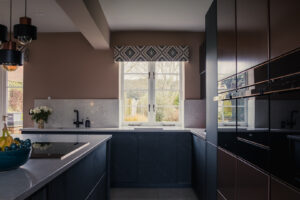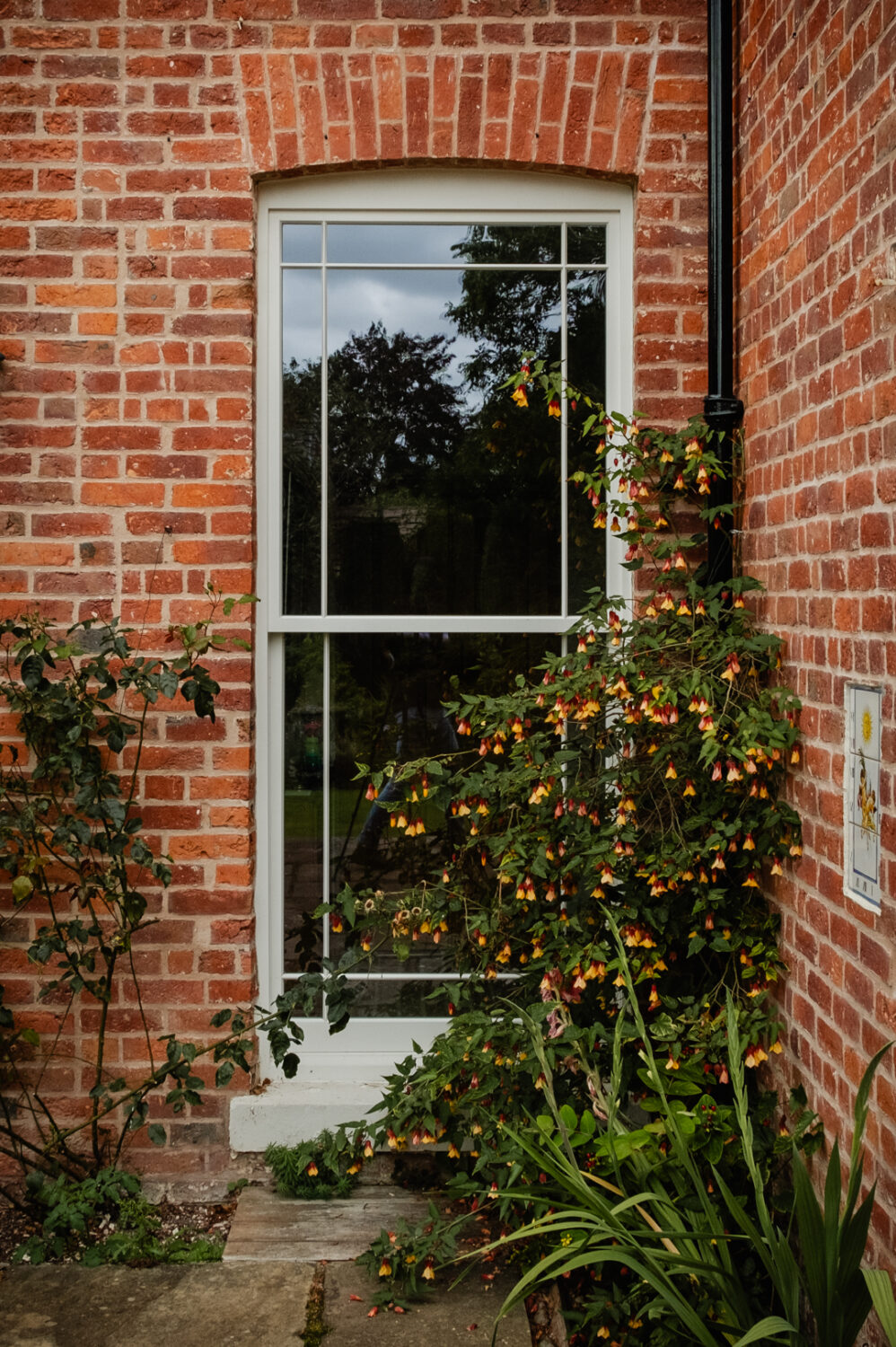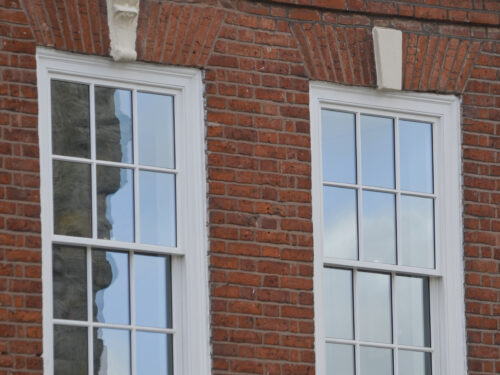What Are Sash Windows?
A sash window is a window with one or more movable panels (sashes) that slide vertically or, in some cases, horizontally within a frame. Unlike casement windows that swing open, sash windows move smoothly up and down, staying neatly within the wall line.A Brief History
Sash windows date back to the late 17th century, first appearing in grand English homes before becoming widespread in Georgian, Victorian, and Edwardian architecture. Originally crafted from timber and single-glazed panes, they were designed for both elegance and practicality, allowing homes to ventilate efficiently without protruding frames disrupting the building’s exterior.Types of Sash Windows
Single-Hung Sash Windows – One sash moves while the other remains fixed. Double-Hung Sash Windows – Both sashes slide independently, offering better airflow control. Vertical Sliding Sash Windows – A classic design where one or both sashes slide vertically within the frame, commonly found in period homes and conservation areas. This design maintains traditional aesthetics while incorporating modern materials for improved efficiency. Spring-Balanced Sash Windows – A modern design that replaces the traditional weights and pulleys with a concealed spring mechanism. Modern sash windows operate using a loaded spring mechanism or torsion balance instead of the conventional weight and cord system, providing functional advantages.The Science Behind How Sash Windows Work
Counterbalance Mechanism: Smooth & Effortless Movement
At the heart of a sash window’s functionality is a clever counterbalance system, which makes the sashes glide effortlessly and hold in place at any height. Traditional Pulley and Weight Mechanism- Each sash is attached to a cord or chain that runs over a pulley at the top of the window frame.
- The other end of the cord is connected to a counterweight (typically lead or cast iron), hidden inside the frame.
- This weight perfectly balances the sash, making it easy to lift and hold in place without the need for force.
- Instead of weights and pulleys, some sash windows use a spring-loaded balance, which provides controlled tension to support the sash.
- This sleek alternative eliminates the need for bulky weight boxes, making it ideal for contemporary homes.
Airflow & Ventilation: The Passive Cooling Effect
One of the best-kept secrets of sash windows is their ability to create a natural, energy-efficient breeze.- The Stack Effect – When both sashes are open, warm air escapes from the top, while cool air is drawn in from below. This creates a self-regulating airflow that keeps rooms fresh, reducing the need for fans or air conditioning.
- Thermal Efficiency – While traditional sash windows were single-glazed, modern upgrades include draught-proofing and double glazing to improve insulation and energy efficiency.
Friction & Sliding: Ensuring a Smooth Glide
For sash windows to function properly, they need to move smoothly with minimal resistance.- Traditional wooden runners were lubricated with wax or soap to reduce friction.
- Modern advancements use nylon or polymer tracks, which prevent sticking and improve longevity.
- A properly weighted sash ensures balance and effortless movement, preventing unwanted slamming or jamming.
Security & Locking Mechanisms
Sash windows are often admired for their beauty, but security is just as important.- Traditional locks include fitch fasteners and quadrant locks, which secure the two sashes together.
- Modern enhancements offer keyed locks, restrictors for child safety, and even toughened or laminated glass for added protection.
Materials & Construction: What Goes Into a Sash Window?
Frame Materials
- Timber – The classic choice, offering natural beauty and breathability while lasting for decades with the right care.
- uPVC – A low-maintenance alternative, providing better insulation but lacking the heritage appeal of timber.
- Aluminium – Sleek, durable, and modern, often used for contemporary sash window designs.
Glazing Options
- Single Glazing – Traditional but not energy-efficient.
- Double/Triple Glazing – Improves insulation, reduces noise, and enhances security.
- Low-E Coatings & Gas-Filled Panes – Maximise energy efficiency while keeping period charm intact.
Maintenance & Common Issues
| Problem | Cause | Solution |
|---|---|---|
| Sticking sashes | Swollen wood, paint buildup | Sand & repaint, apply wax/lubricant |
| Broken sash cords | Age, wear & tear | Replace cord or upgrade to spring balances |
| Draughts & heat loss | Poor sealing, single glazing | Install weatherstripping, consider secondary glazing |
| Condensation | Poor ventilation, cold surfaces | Improve airflow, upgrade glazing |
Modern Innovations: Bringing Sash Windows into the 21st Century
Sash windows have evolved to meet modern needs while preserving their timeless elegance.- Double-Glazed Sash Windows – Retain classic charm while improving insulation and energy efficiency.
- Acoustic Glass – Reduces external noise, making it ideal for urban homes.
- Self-Cleaning Glass Coatings – Uses UV technology to break down dirt, reducing maintenance.
- Smart Sash Windows – Integrated with automation, allowing remote or sensor-based operation.









